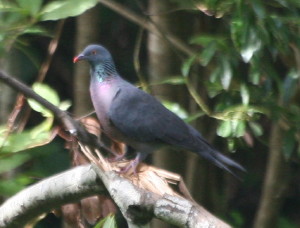Facts About Bolle's pigeon
Bolle's Pigeon is an endemic bird species exclusive to the Canary Islands, Spain. A member of the Columba genus in the Columbidae family, this pigeon is named in honor of the German naturalist Carl Bolle. It is larger than the common pigeon, distinguished by its dark grey feathers and striking red beak, with males exhibiting metallic hues.
These pigeons primarily inhabit laurel forests, where they nest in trees and sustain themselves on a diet rich in fruits and plant matter. Their breeding season spans from February to June, during which they construct nests from sticks and twigs on tree branches.
Over the years, the population of Bolle's Pigeon has experienced fluctuations due to deforestation, hunting, and predation. However, conservation efforts have helped stabilize their numbers, with current estimates ranging from 5,000 to 20,000 individuals.
Bolle's Pigeons thrive in dense laurel forests and mountainous regions. While their diet mainly consists of fruits, they also consume grains and other plant materials. Despite being classified as "Least Concern" on the IUCN Red List, they still face threats from habitat loss, hunting, and diseases such as Newcastle Disease. Fortunately, protections under the European Union Birds Directive offer some safeguards.
From a scientific perspective, Bolle's Pigeon belongs to the Columba genus, which includes various pigeon species. Their evolutionary history in the Canary Islands dates back millions of years, with mitochondrial DNA suggesting their ancestors arrived around 5 million years ago. They share a close evolutionary relationship with the Trocaz Pigeon, another bird native to the Macaronesian region.

 Gibraltar
Gibraltar